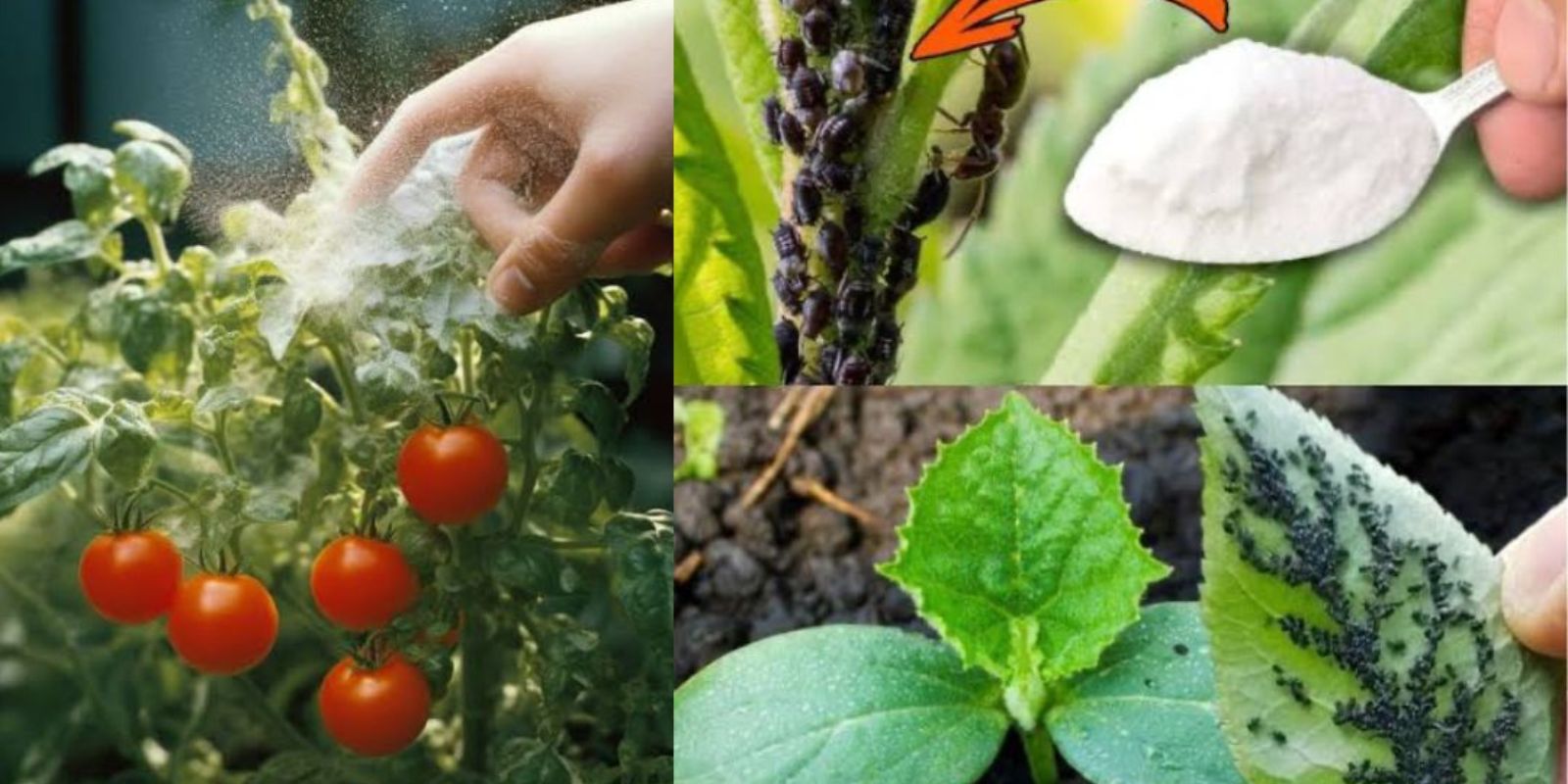Gardening is a rewarding hobby, but it comes with its fair share of challenges. From battling pests to maintaining plant health, every gardener faces hurdles. What if we told you a humble kitchen ingredient—baking soda—could simplify these tasks and transform your gardening game? In this article, we’ll uncover the power of baking soda and explore 10 practical ways to use it in your garden.
Why Baking Soda?
Baking soda, or sodium bicarbonate, is a natural, eco-friendly compound with versatile properties. It’s inexpensive, safe for plants and the environment, and has antifungal, pest-repelling, and cleaning capabilities. These characteristics make it a valuable tool for every gardener.
Let’s dive into how this simple ingredient can address common gardening issues while promoting healthier plants.
1. Fungal Control
Fungal diseases like powdery mildew and black spots can wreak havoc on plants. Baking soda acts as an effective fungicide.
- How to Use:
Mix 1 tablespoon of baking soda with 1 liter of water and add a few drops of liquid dish soap. Spray this solution on affected plants every 7-10 days to prevent and control fungal growth. - Why It Works:
Baking soda alters the pH level on leaf surfaces, creating an environment where fungi struggle to survive.
2. Natural Weed Killer
Weeds often compete with your plants for nutrients and water. Baking soda can help control weeds, particularly in cracks and walkways.
- How to Use:
Sprinkle baking soda directly into the cracks where weeds grow. Repeat every few weeks. - Why It Works:
The sodium content dehydrates weeds, effectively killing them without harming surrounding plants.
3. Test Soil Acidity
Understanding your soil’s pH is essential for growing healthy plants. Baking soda can quickly help determine if your soil is acidic.
- How to Use:
Take a small sample of moist soil and sprinkle baking soda over it. If it bubbles, your soil is acidic. - Why It Works:
The reaction occurs due to the combination of acidic soil and alkaline baking soda.
4. Sweeten Tomato Plants
Tomatoes are a garden favorite, but they can sometimes taste too tangy. Baking soda can help improve their flavor.
- How to Use:
Sprinkle a small amount of baking soda around the base of your tomato plants. Avoid getting it directly on the plant. - Why It Works:
Baking soda reduces soil acidity, leading to sweeter, less acidic tomatoes.
5. Repel Ants Naturally
Ants can disrupt soil and invite other pests like aphids. Baking soda offers a simple solution.
- How to Use:
Mix equal parts of baking soda and sugar, and place the mixture near ant trails. - Why It Works:
The sugar attracts ants, and the baking soda reacts with their digestive system, deterring infestations.
6. Clean Gardening Tools
Keeping gardening tools clean helps prevent disease spread and ensures they last longer. Baking soda can make tool maintenance effortless.
- How to Use:
Create a paste using baking soda and water. Use it to scrub dirt and grime off your tools, then rinse thoroughly. - Why It Works:
The abrasive nature of baking soda removes tough stains and prevents rust.
7. Deter Pests
Insects like caterpillars and slugs can damage plants. Baking soda is a safe, non-toxic pest deterrent.
- How to Use:
Dust a light layer of baking soda on the leaves of susceptible plants. Reapply after rain. - Why It Works:
Baking soda irritates pests, keeping them away without harming beneficial insects.
8. Boost Compost Efficiency
Composting is a fantastic way to recycle organic waste, but it can sometimes become too acidic or smelly. Baking soda can balance these issues.
- How to Use:
Sprinkle a small amount of baking soda into your compost pile. Use sparingly to avoid halting decomposition. - Why It Works:
Baking soda neutralizes excessive acidity, improving the overall composting process.
9. Freshen Outdoor Furniture
Gardens are not just for plants—they’re also spaces for relaxation. Baking soda can keep your patio furniture clean and inviting.
- How to Use:
Mix baking soda with water to form a paste. Use it to scrub furniture, rinse, and let it air dry. - Why It Works:
Its gentle abrasive properties remove dirt, stains, and mildew effectively.
10. Extend the Life of Cut Flowers
Baking soda isn’t just for plants in the ground. It can also help keep cut flowers fresh for longer.
- How to Use:
Add a pinch of baking soda to the vase water before placing your flowers in it. - Why It Works:
Baking soda balances the pH of the water, slowing bacterial growth and extending the life of your blooms.
Additional Tips for Using Baking Soda in the Garden
- Always test a small area before applying baking soda solutions widely.
- Use the right concentration to avoid damaging plants.
- Store baking soda in a cool, dry place to maintain its effectiveness.
The Environmental Edge
Unlike chemical pesticides and fungicides, baking soda is biodegradable and eco-friendly. It doesn’t harm the soil, water, or beneficial insects. By using baking soda, you’re contributing to sustainable gardening practices.
Conclusion: A Must-Have for Every Gardener
Baking soda is more than just a pantry staple—it’s a gardener’s best friend. From protecting plants against diseases to keeping your garden tools spotless, its versatility is unmatched. The best part? It’s affordable, safe, and effective.
Try these 10 uses in your garden today and witness the transformation. Have your own baking soda gardening hacks? Share them with us in the comments below!

